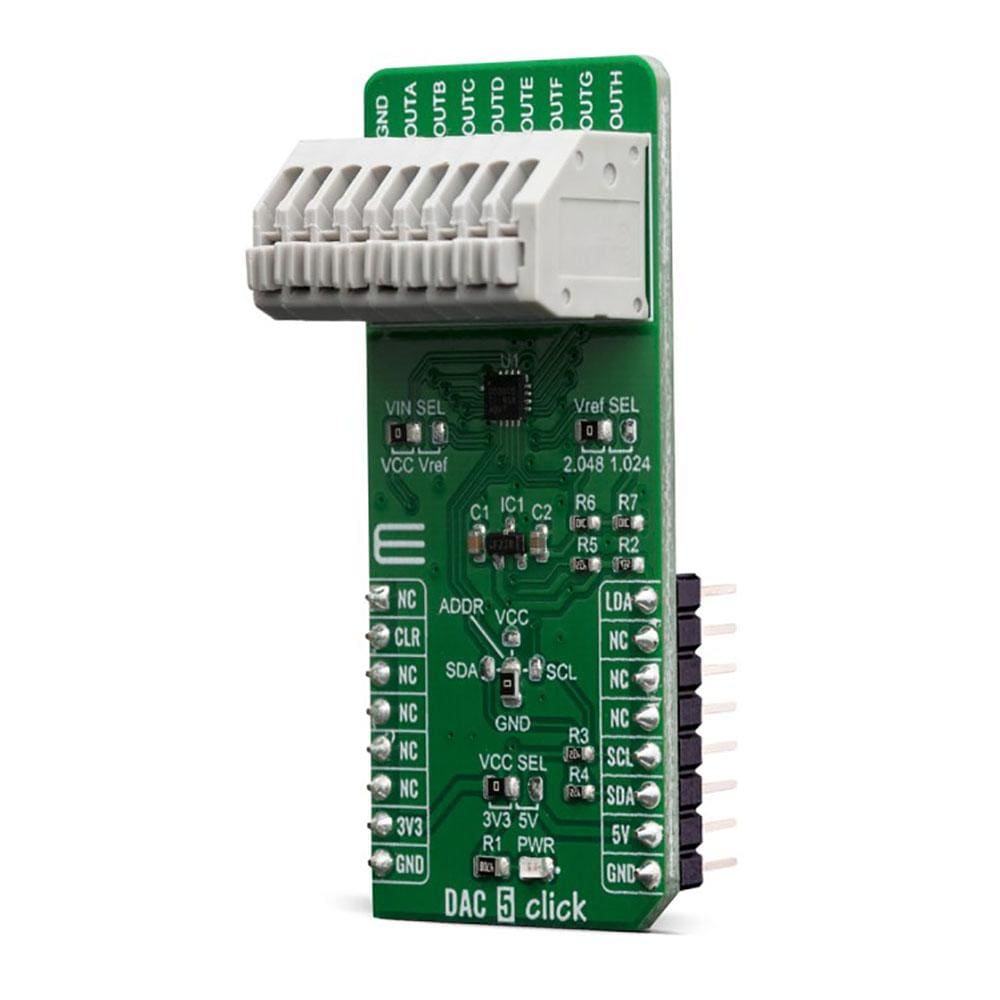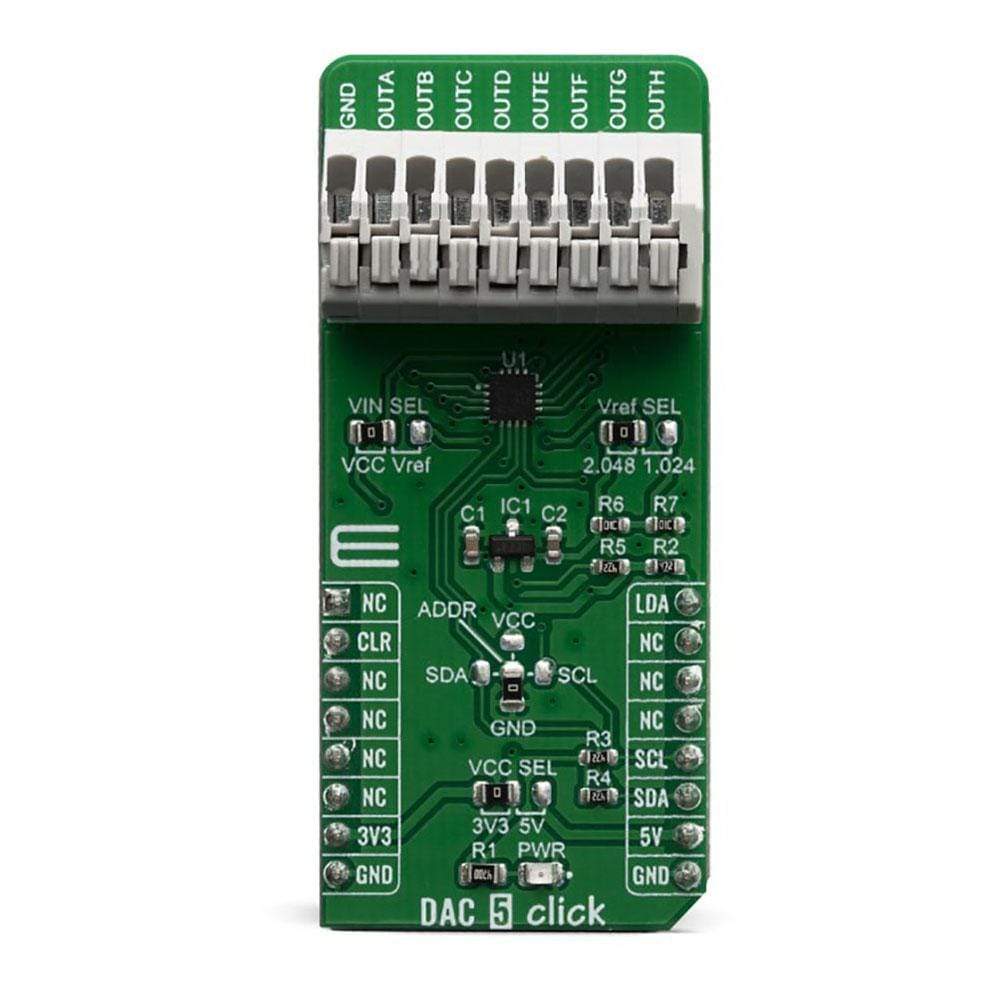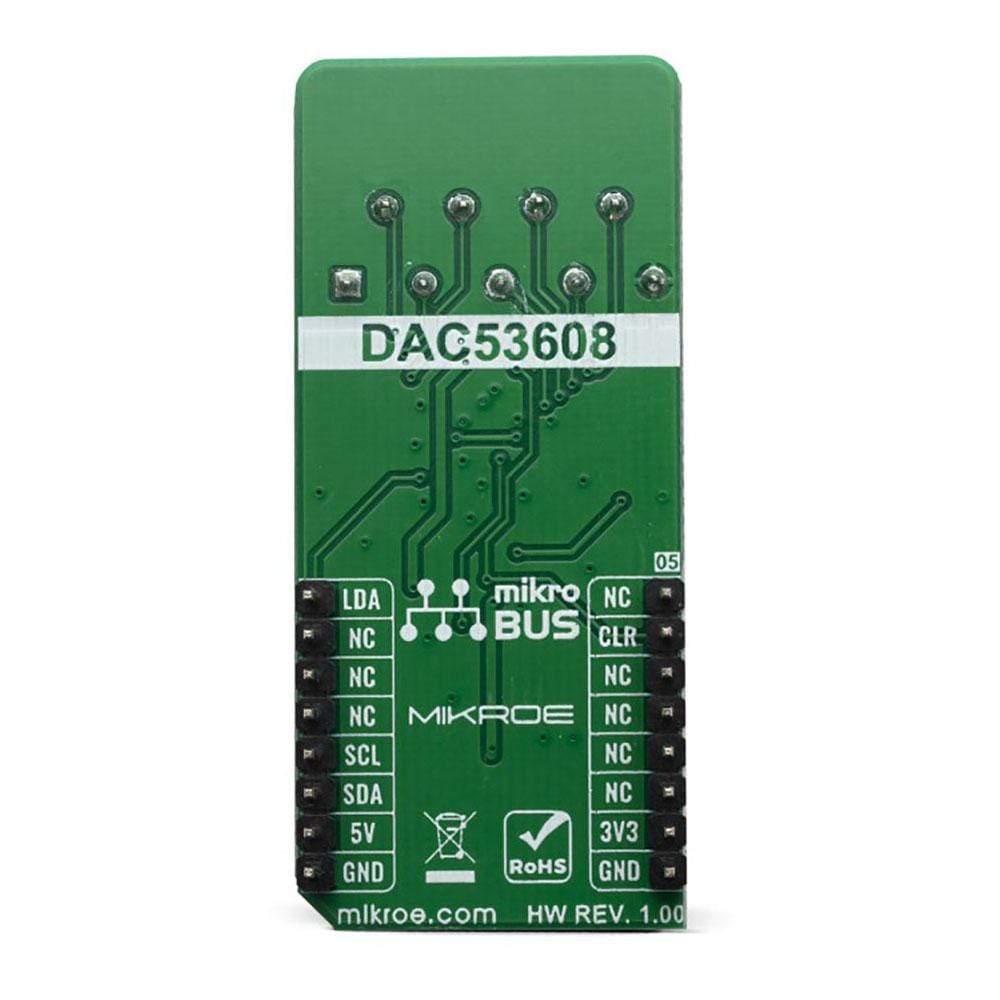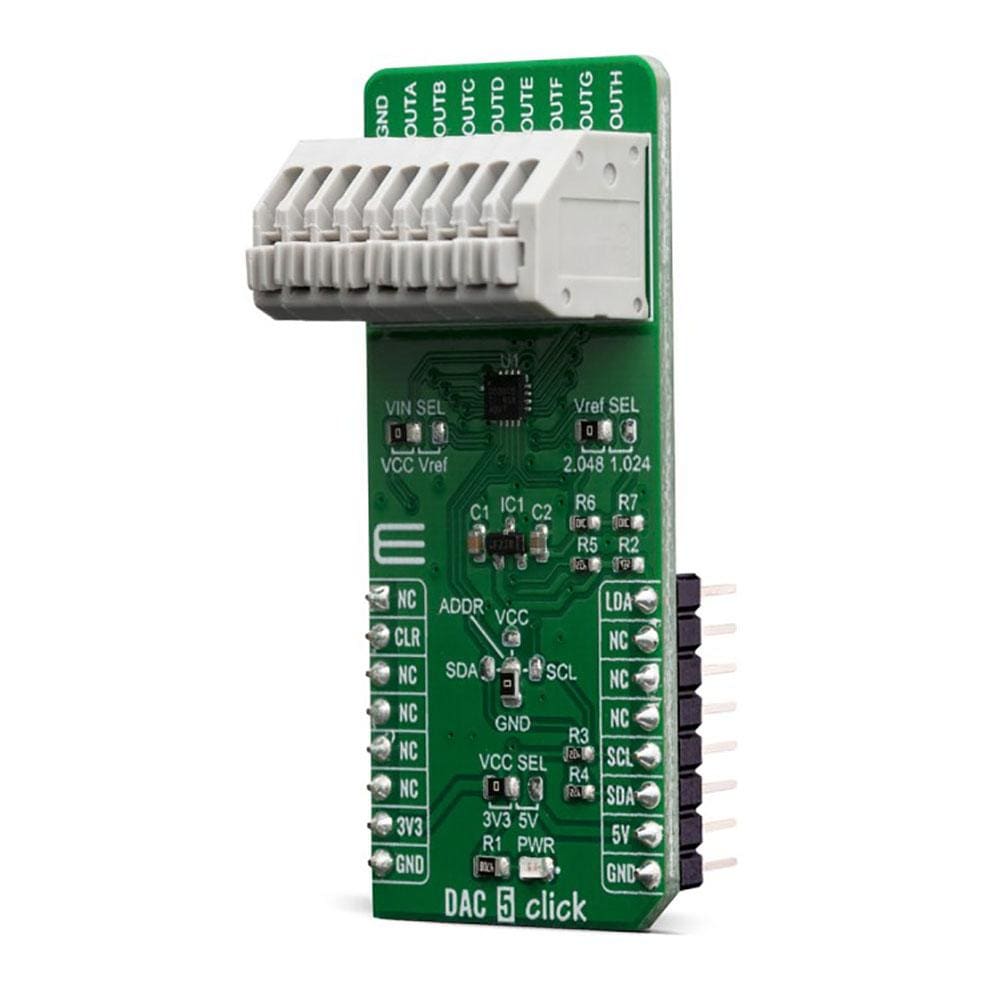
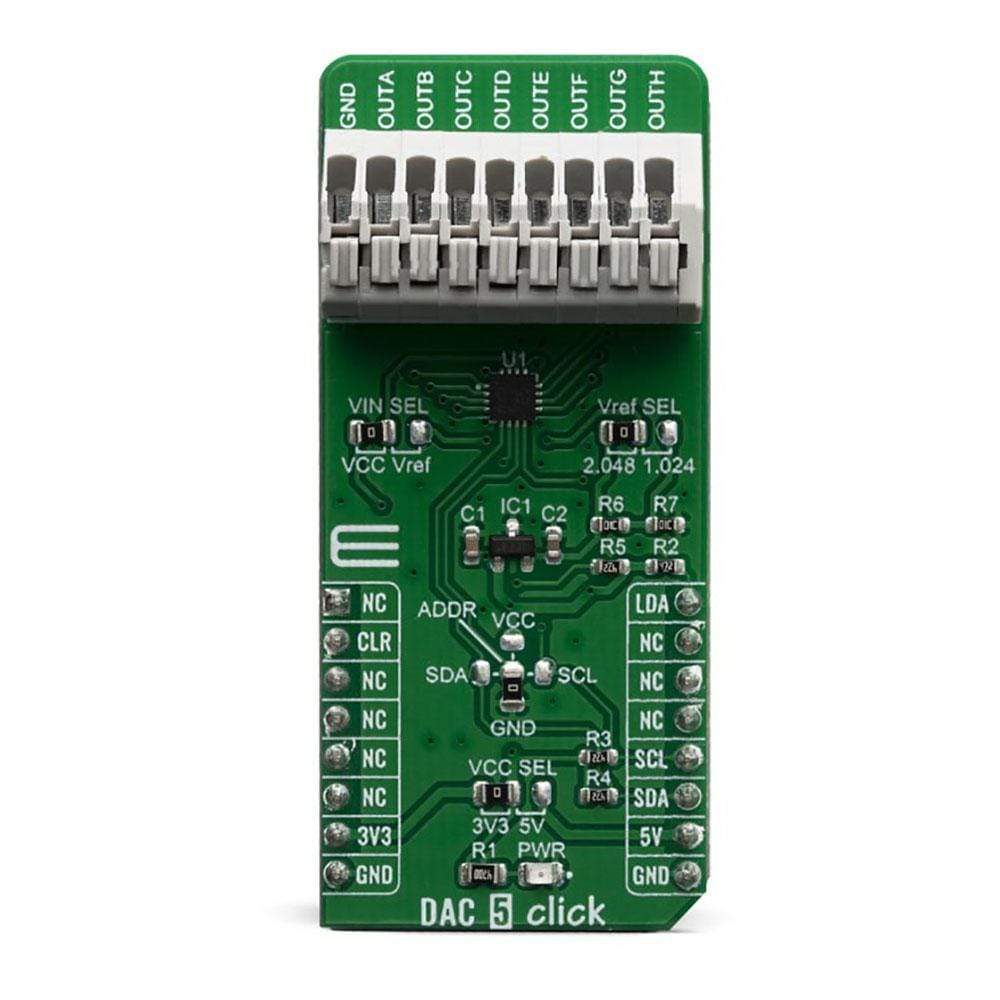
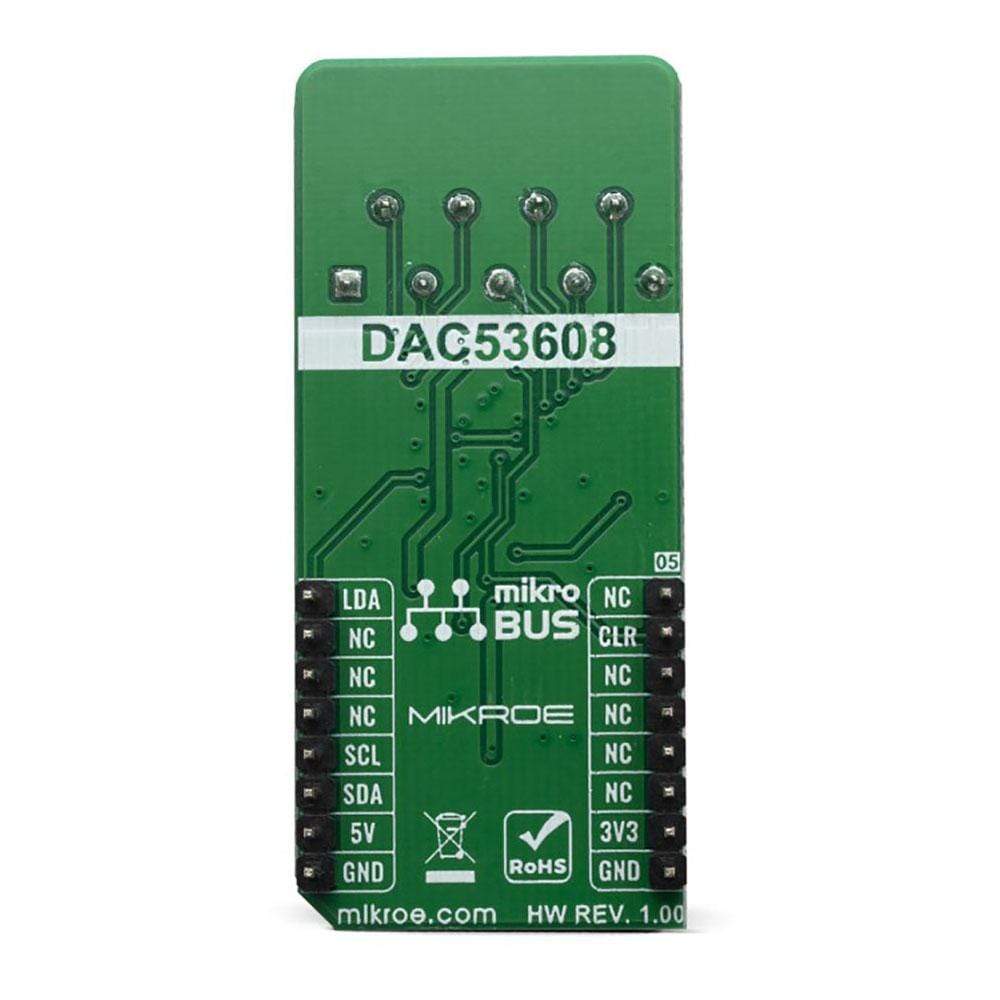
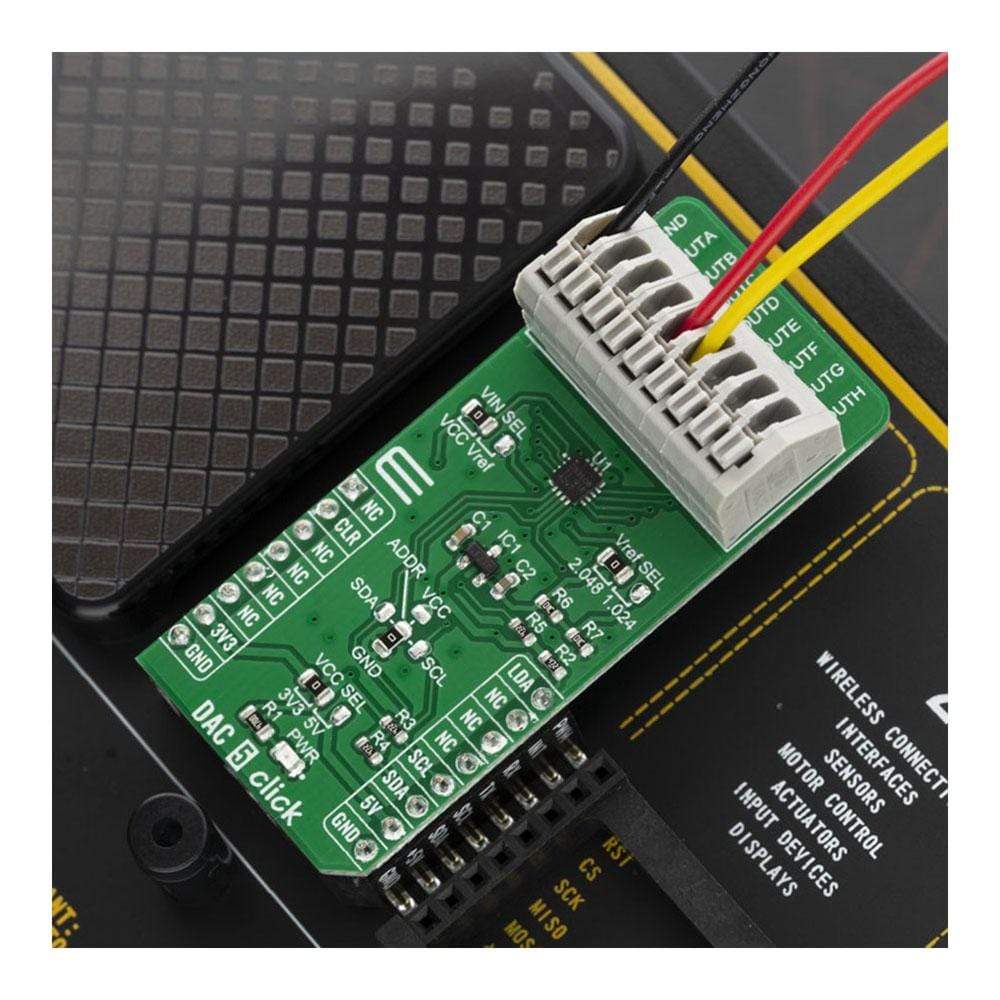
Overview
The DAC 5 Click Board™ carries Texas Instruments DAC53608 IC, a low-power, eight-channel, 10-bit buffered Digital-to-Analog Converter. DAC53608 converts the digital value to the corresponding voltage level using external voltage reference. For that purpose, DAC 5 click uses MAX6106, which is a low-dropout micropower voltage reference with 2,048V output voltage.
With all those possibilities on board, the DAC 5 Click Board™ makes a perfect choice for an accurate and simple generation of analogue signals for various purposes, such as programmable Power Supplies, Laser Drivers, Projectors, IP Network cameras, autofocus digital still camera lens, and more.
Downloads
Le DAC 5 Click Board™ est équipé du circuit intégré Texas Instruments DAC53608, un convertisseur numérique-analogique à huit canaux et 10 bits à faible consommation. Le DAC53608 convertit la valeur numérique au niveau de tension correspondant à l'aide d'une référence de tension externe. À cette fin, le DAC 5 Click utilise le MAX6106, qui est une référence de tension micro-puissance à faible chute de tension avec une tension de sortie de 2 048 V.
Avec toutes ces possibilités à bord, le DAC 5 Click Board™ constitue un choix parfait pour une génération précise et simple de signaux analogiques à des fins diverses, telles que les alimentations programmables, les pilotes laser, les projecteurs, les caméras réseau IP, les objectifs d'appareil photo numérique autofocus, et plus encore.
| General Information | |
|---|---|
Part Number (SKU) |
MIKROE-3712
|
Manufacturer |
|
| Physical and Mechanical | |
Weight |
0.023 kg
|
| Other | |
Country of Origin |
|
HS Code Customs Tariff code
|
|
EAN |
8606018716708
|
Warranty |
|
Frequently Asked Questions
Have a Question?
Be the first to ask a question about this.

